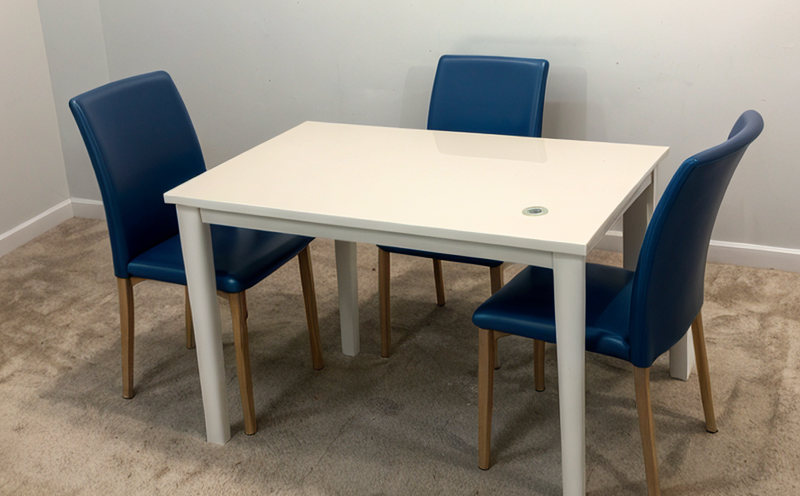ISO 175 Chemical Resistance Testing of Interior Plastics
The ISO 175 standard is specifically designed to evaluate the resistance of plastic materials, including those used in furniture and interior applications, against a range of chemicals. This test is crucial for ensuring that plastics remain structurally sound and functional when exposed to common household substances such as water, solvents, cleaning agents, and oils.
Understanding chemical resistance is vital for the longevity and safety of products like chairs, sofas, tables, and decorative items within the interior design industry. The test simulates real-world conditions where plastics may come into contact with chemicals during use or maintenance. Compliance with this standard helps manufacturers meet regulatory requirements while enhancing product durability and performance.
The process involves placing a specimen of the plastic material in a solution containing the specified chemical for a prescribed period. Afterward, the sample is examined for changes in appearance (such as discoloration), physical properties (like hardness or flexibility), and structural integrity. The test can also assess whether there has been any leaching of chemicals from the plastic into the surrounding environment.
For accurate results, it's important to follow precise procedures outlined by ISO 175. This includes selecting appropriate solutions based on intended use cases (e.g., water for general household plastics), ensuring proper specimen preparation methods, and using suitable containers or apparatus during exposure periods. Proper interpretation of test outcomes involves comparing post-exposure measurements against initial values to determine if significant degradation has occurred.
Compliance with ISO 175 ensures that interior plastic products meet industry standards for quality control and safety assurance. By adhering to this international standard, manufacturers can demonstrate their commitment to producing reliable and long-lasting furniture and décor items suitable for various environments.
- Environmental Impact: Reduced waste due to increased product longevity.
- Sustainability: Minimized resource consumption through improved durability.
- Health & Safety: Prevention of potential chemical releases into living spaces.
Why Choose This Test
The ISO 175 Chemical Resistance Testing is essential for several reasons, particularly when dealing with interior plastics. It provides a comprehensive evaluation of how well these materials withstand exposure to chemicals commonly found in household settings.
By undergoing this test, manufacturers can ensure their products will maintain optimal functionality over extended periods without compromising safety or appearance. This testing helps identify any potential issues early on so corrective actions can be taken before the product reaches market shelves.
Additionally, compliance with ISO 175 enhances a company's reputation by demonstrating its dedication to maintaining high-quality standards and meeting regulatory expectations. It also offers peace of mind for consumers who purchase these products knowing they have been rigorously tested according to recognized international guidelines.
The test results contribute significantly to the overall design process, helping engineers refine materials selection and improve product performance based on empirical data rather than guesswork or assumption.
Customer Impact and Satisfaction
When furniture manufacturers invest in ISO 175 chemical resistance testing for their interior plastics, they are prioritizing customer satisfaction. The primary goal is to provide durable products that not only look good but also perform reliably under various conditions.
Customers appreciate knowing that the materials used in their homes have been subjected to rigorous quality checks before being sold to them. This transparency builds trust and fosters positive brand perceptions, which can lead to repeat purchases and referrals.
The results of this testing play a crucial role in educating consumers about proper care instructions for maintaining product integrity longer. For instance, if certain chemicals are known to cause damage over time, manufacturers might recommend specific cleaning agents or maintenance schedules to extend the life span of their items.
Moreover, by ensuring that interior plastics meet stringent chemical resistance standards, companies can reduce customer complaints related to premature failure or unsightly changes in appearance. This proactive approach contributes positively towards enhancing overall customer satisfaction levels.
Environmental and Sustainability Contributions
- Resource Efficiency: By improving the longevity of products, this test helps minimize raw material consumption over time.
- Waste Reduction: Increased product durability translates to less frequent replacements, thereby reducing waste generation.
- Eco-Friendly Manufacturing: Compliance ensures that materials are chosen wisely, leading to fewer environmentally harmful substances being introduced into the environment.





